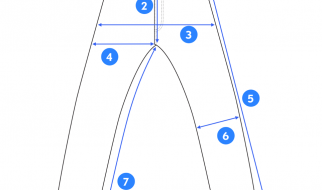We look back at D&D creator TSR?s first foray into the stars.
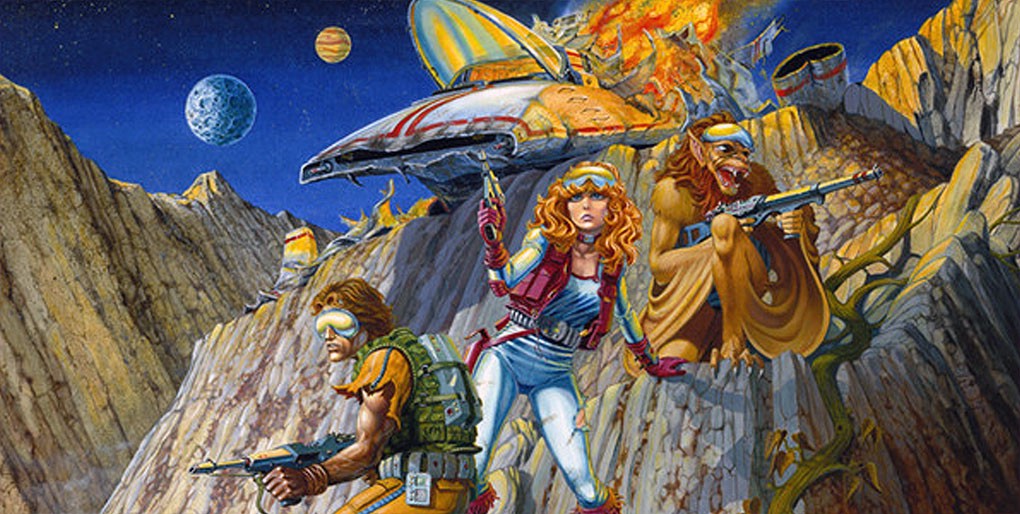
[First published on Tabletop Tribe]
The huge popularity of Dungeons & Dragons (D&D) in the mid-1970s prompted developer TSR to create more roleplaying games (RPGs) in other genres, like Boot Hill (1975) for the Wild West, Gamma World (1978) set in post-apocalyptic wastelands and Top Secret (1980) for cloak?n?dagger spie.

But most 70s kids were also sci-fi junkies, thanks to Star Wars (1977), Battlestar Galactica (1978) and the revamped 50s classic Buck Rogers in the 25th Century (1979).
So what was on the sci-fi RPG menu?
Pretty much your only option was Traveller (1977), produced by TSR?s rival GDW. Unashamedly technical and deep, it focused less on space-swashbuckling and more on meaningful exploration, even grappling with the science of real space-travel.
But for all its realism, or perhaps because of it, it was less attractive to younger or more casual players. Stuffy rule books with too much text and not enough pretty pictures. At least for 11 year old me.
TSR didn?t spot the sci-fi opportunity until 1980, when they released Star Frontiers, marketed as ?the playable one? as a direct dig at Traveller. With work by fantasy art legend Larry Elmoregracing the pages, it certainly looked better.
Alpha Dawn
 1st edition boxed set contents.
1st edition boxed set contents.
Star Frontiers (subtitled Alpha Dawn in the 1982 reprint) is set near the centre of a spiral galaxy where star ships jump to ?The Void?, a hyper-spatial realm that greatly shortens the travel times between inhabited worlds.
The basic game setting is an area known as ?The Frontier Sector? where four sentient races (Dralasite, Humans, Vrusk, and Yazirian) had met and formed the United Planetary Federation (UPF).
 The four playable races from the Alpha Dawn core set, from left to right: Yazirian; Dralasite; Human; Vrusk.
The four playable races from the Alpha Dawn core set, from left to right: Yazirian; Dralasite; Human; Vrusk.
Player characters often act as hired agents of the Pan Galactic Corporation in exploring the Frontier and fighting the insidious incursions of a mysterious, worm-like alien race known as the Sathar.
Right off the bat, the playable races and the main enemy were a breath of fresh air, at a time where literally every alien you saw in sci-fi seemed very humanoid.
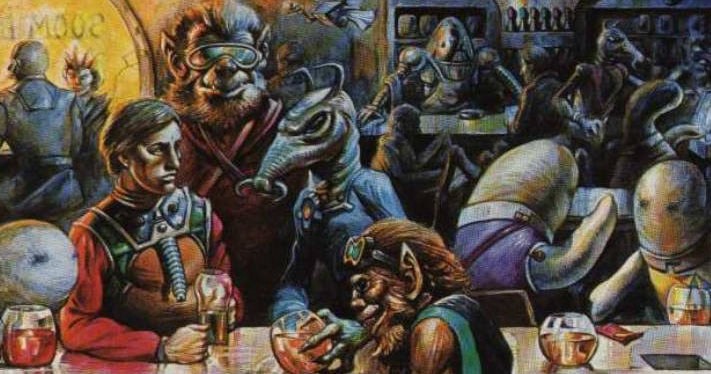 Just your average hive of scum and villainy?
Just your average hive of scum and villainy?
It?s hard to get much more alien than the huge insectoid Vrusk. Other than the giant amoeba that is a Dralasite. The latter is a complete hoot to play, morphing its form to slide under doors or literally peeking through keyholes. Sure, the Yazirian was a little like a slightly feeble, flying wookiee, but the gliding skills alone made him an attractive option to play.
Although the 1985 expansion Zebulon?s Guide to Frontier Space (officially Volume 1, but there were never any follow-ups) met with mixed reviews from the community on its refinement and redevelopment of the core rules, it too introduced three more very alien alien PC races, albeit offset by the inclusion of, basically, space dwarves.
 The four additional PC races introduced in the controversial Zebulon?s Guide To Frontier Space expansion (from left to right): Humma; Ifshnit (Space Dwarf!); Mechanon; Osakar.
The four additional PC races introduced in the controversial Zebulon?s Guide To Frontier Space expansion (from left to right): Humma; Ifshnit (Space Dwarf!); Mechanon; Osakar.
The Sathar too felt creepily alien and utterly mysterious, a point expressed nicely in their racial portrait in the rulebook: a pinned out dissection specimen. This actually became a constant goal of my own group?s PCs: to capture a live Sathar to bring them fame and fortune!
The Sathar were mainly to be used sparingly, rather than having them as some sort of laser-fodder. In the many games I GM?d, they only showed up a handful of times, usually at some climactic moment, to show they?d been pulling strings behind the scenes all along.
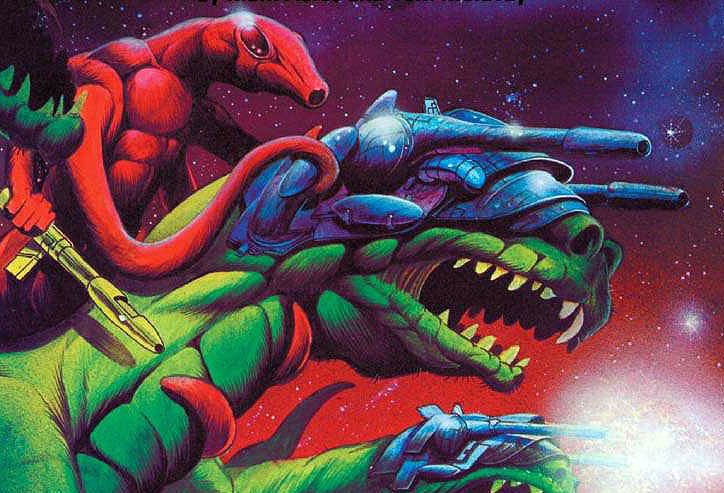 Evil aliens riding cyber-dragons. What?s not to like?
Evil aliens riding cyber-dragons. What?s not to like?
Star Frontiers: Alpha Dawn came as two slim volumes: a basic skirmish game with lighter RPG elements, introducing you to the elementary mechanics of play (mainly combat) and advanced rules fleshing out the storytelling aspects of play, and detailing skill progressions, advanced equipment ? the stock RPG bread-and-butter.
Also included in the core box was an introductory module, Crash on Volturnus, the first instalment of what was to become a three-part Volturnus campaign.
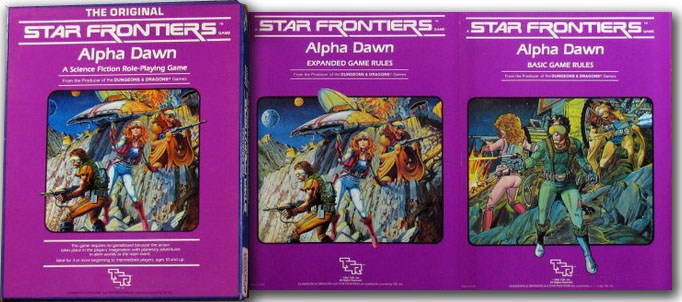 2nd edition Alpha Dawn cosmetic changes ? mainly due to the upcoming Knight Hawks box set.
2nd edition Alpha Dawn cosmetic changes ? mainly due to the upcoming Knight Hawks box set.
PCs learned pretty early the value of ?Talk First, Shoot Later? when it came to alien races: be a trigger-happy, zenophobic, dungeon-crawler and you?d doom the entire party.
At the very least life would be a lot more uncomfortable than if you hadn?t just killed-on-sight those many-armed, bug-eyed folk that were just trying to help you.
It was fair enough, I guess. A lot of players had just spent too long in the dungeon, where if you saw something with more than two eyes, you killed it, banked the XP and nicked it?s stuff.

Crash on Volturnus was a wilderness adventure (although there was a satisfying cavern crawl for those more used to D&D), and served to flesh out the planet for the later modules.
Talking of later modules, there were only to be four more Alpha Dawn modules (not including the short scenario supplied with the GM screen, and the two later 2001/2010 Space Odyssey tributes). Combined with only four additional modules produced for the Knight Hawksexpansion (see below), the available module library isn?t exactly extensive.
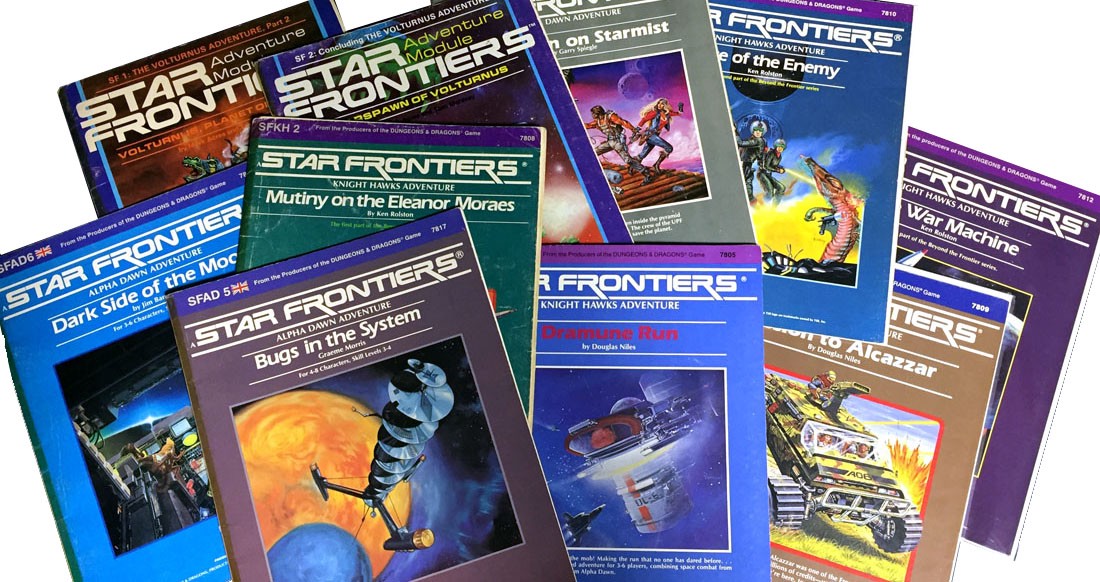 Apart from modules supplied wit the two box sets, and a couple of Kubrick tributes, this pretty much sums up the entirety of the module catalogue.
Apart from modules supplied wit the two box sets, and a couple of Kubrick tributes, this pretty much sums up the entirety of the module catalogue.
That said, there?s still plenty to get your teeth into, and any wilderness adventures, particularly the initial Volturnus campaign, provided plenty of scope for a long, drawn-out epic if required.
The Volturnus campaign also staved off something the rules lacked for a while. Spaceship rules. Yup, you heard it right. Star Frontiers: Alpha Dawn shipped without space ships and space travel rules barring about a page with information on chartered flights.
Fairly bold/foolhardy?
That?s not to say that you couldn?t travel through space, after all the Crash on Volturnus was a spaceship crash, but PCs were always just passengers.
Strangely though that never really bothered us at the time. We were too busy in laser gun battles with space pirates or killer robots or aliens. Or accidentally driving huge 4-wheels drives through tribal villages, ruining interplanetary relations.
We just saw space travel as a way to get from one good adventure to the next, and were happy to get someone else to do the driving. Which is a shame though, as the journey is, of course, most of the fun.
Knight Hawks
 1st edition Knight Hawks boxed set. A 2nd print run came only 9 months later due to demand, featuring only a couple of very minor cosmetic changes to cover fonts.
1st edition Knight Hawks boxed set. A 2nd print run came only 9 months later due to demand, featuring only a couple of very minor cosmetic changes to cover fonts.
We had to wait a year for the spaceship expansion to hit the shelves, in the meantime making do with a mini-module packaged with the GM?s screen and another full-length adventure, Sundown on Starmist, before the long-awaited space ship rules turned up in the form of Knight Hawks.
The space travel expansion followed the same formula as the Alpha Dawn core set: there?s a slim ?basic? version that covers ship-to-ship combat and also serves as a hex-based tabletop game in its own right, and a thicker expanded rule book that deals with integrating ship design, travel and combat into your existing Star Frontiers campaign.

In fact the two boxed sets are almost identical in terms of the content: thin basic rule book; thicker advanced rule book; counter sheet; large map; couple of D10? obligatory white crayon for colouring in your die faces (yeah, Olde Skoole FTW.)
Whilst scoffed at by the Traveller brigade for not being half nerdy enough when it came to the complexities of space travel, Knight Hawks nevertheless presented a believable system, similar in many ways to Traveller, but without the formulae.
In Knight Hawks ships were constructed with decks stacked up the length of the ship. Within a solar system a ship accelerates towards its destination creating gravity for the decks, then the crew strap in for a mid-point turn around, and then there?s constant deceleration for the second half of the trip for more inertia-based gravity generation.
Obviously none of this is revolutionary stuff, but it actually puts one over on Traveller here, which usually has the more ?traditional movie sci-fi? horizontal decks running front-to-back.
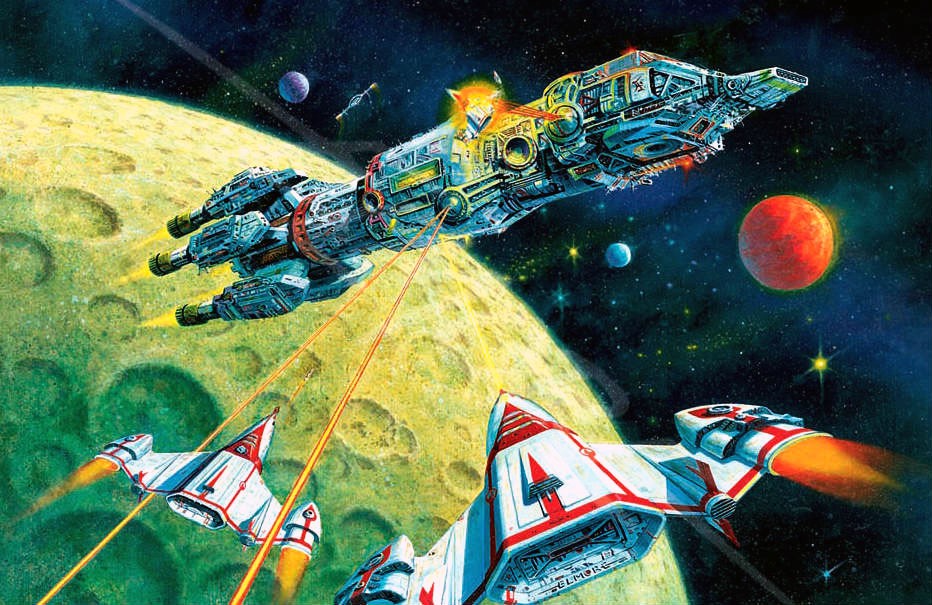
With Knight Hawks came a handful of new modules, including another three-part campaign, Beyond the Frontier, which does a fine job of merging the familiar terrestrial adventuring of the Volturnus campaign with the new interstellar action, although truth be told there?s more of the former.
Beyond The Frontier was a great introduction to the new material, coaxing players in and then ramping up the tension and new content in equal measure. However, it didn?t necessarily segue well from the first module release, Drammune Run, which potentially left the PCs with their own perfect starter ship to start exploring the sector and beyond.
That said, if you wanted to go a more free-form route and not bother with campaigns and more published modules, then Drammune Run was the perfect place to start.
Miniatures
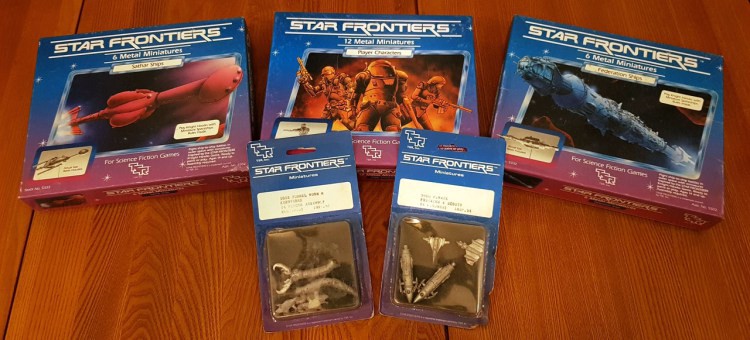
Although both Alpha Dawn and Knight Hawks came with sheets of counters to cover everything from star ships to vehicles and characters, TSR also produced a number of metal miniatures for the game, both as boxed sets and in individual blisters.
These were of varying quality and more peculiarly, varying scales. with the contents of the Spacefarers set seeming slightly larger than their counterparts in the Player Characters set.
That said they were a big step up from the counters, and this was a time where even Games Workshop miniatures were often a little on the dodgy side.
Perhaps the best use for the miniatures was the Knight Hawks hex-based space combat, where the addition of some fairly basically painted ship minis could really bring the table alive, although really requiring bigger hexes than those provided on the starfield map in Knight Hawks for use with the counters.
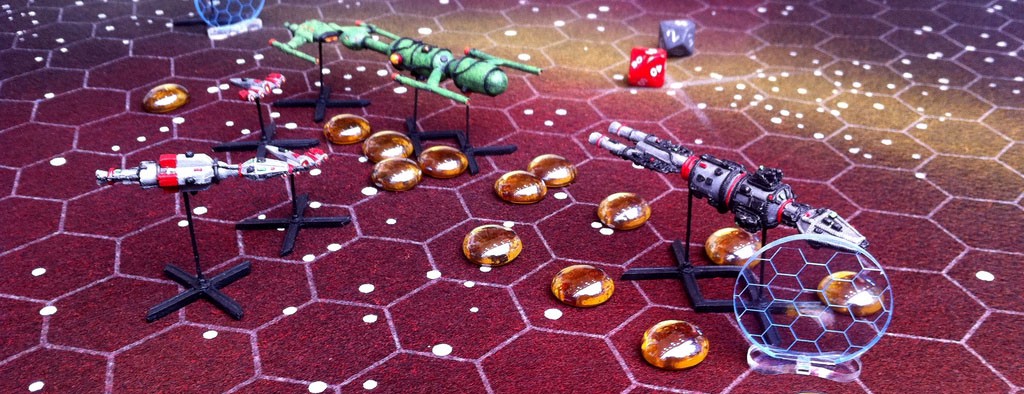 X-Wing and Star Wars: Armada, eat yer heart out! Knight Hawks minis on a custom play mat (Image: Roll 2D6)
X-Wing and Star Wars: Armada, eat yer heart out! Knight Hawks minis on a custom play mat (Image: Roll 2D6)
Word of warning. If you intend tracking down some of these lead-alloy relics, be advised that many sets suffered from dreaded lead rot. It?s actually a better idea to buy a open box to see the contents, even protected by paint (however badly applied ? you can always strip it), than buy one still in shrink full of some slightly toxic, and rather expensive grey powder.
Reprint?
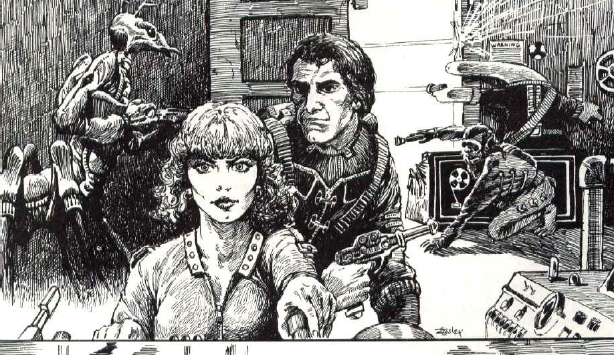
Rumours circulated in 2017 that publisher Evil Hat intended to vie for the lapsing trademark to Star Frontiers from Wizards of the Coast (WOTC), current owners of all TSR?s previous intellectual assets.
Tabletop Tribe approached them for comment and received a comprehensive reply from Fred at Evil Hat, which you can read in full here.
The biggest casualties of the whole affair were the two main Star Frontiers fanzines, Frontier Explorer and Star Frontiersman. You can still find back issues of the former here and the latter here.
Author/editor Tom Stephens would still be producing them to this day, were it not for WOTC essentially issuing a stop-and-desist, primarily as fallout from their reassertion of trademark rights following Evil Hat?s interest. You can read Tom?s message to the community after the initial WOTC contact, and again after they made the decision to prohibit him publishing any more editions of either publication.

At least they allowed him to keep the websites and back issues online, apart from insistence on the redaction of any Dragon magazine material contained in them,
Whilst WOTC were perfectly within their rights to assert their ownership, their action soured their reputation amongst the majority of the Star Frontiers community, many of whom have vowed never to buy another WOTC product, even if they do produce a new version of their favourite sci-fi RPG.
Personally I find the attitude heavy-handed and fairly reprehensible. Considering WOTC essentially inherited Star Frontiers at the bottom of a drawer in the D&D office buyout, and then promptly forgot about it, they might have considered continuing its free distribution as a mark of respect to people like Tom and the Star Frontiers community in general.
You know, the ones who kept the IP alive and in a state worth protecting after almost three decades out in the cold.
Final Thoughts
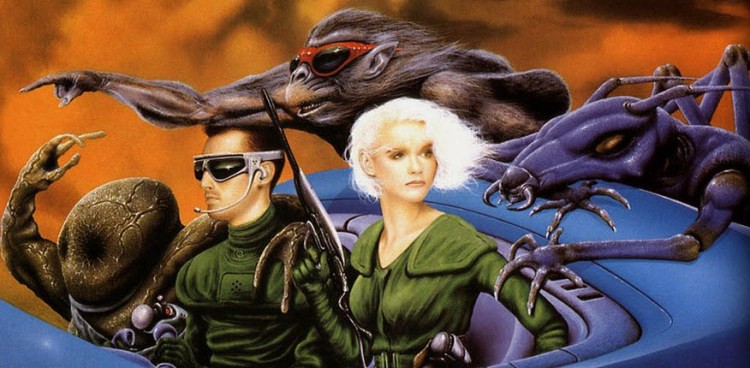
I guess I have a nostalgic affection for this old duffer of an RPG. No doubt since the 80s many far more polished sci-fi games have been published, but as an introduction to the wonderful world of RPGs, or a stepping stone from fantasy to sci-fi, you could do a lot, lot worse.
The game also still has a pretty healthy fan base for a long out-of-print 80s relic, supported by a dedicated wiki and a Facebook page, so you?ll never be short of SF die-hards to fire questions to or get hold of home-grown scenarios and modules to supplement the fairly meagre published offerings.
So what have you got to lose? Or more pertinently, what are you waiting for? You can still download the Alpha Dawn and Knight Hawks expanded rulebooks for free from here, along with some great magazine scenarios, counters and some other stuff, like the Kubrick tributes 2001 and 2010. Other modules and everything else is available from DriveThruRPG. so grab some mates and get exploring the Frontier Sector (and beyond!) for yourselves.

Pros:
- A palatable introduction to RPGs for younger players.
- Not too much of a culture shock for those more used to high fantasy.
- Unique and interesting non-human PC races.
- A lot of material is still free (for now!).
- It?s not as exhaustingly comprehensive as Traveller.
Cons:
- It?s not as exhaustively comprehensive as Traveller.
- System may be showing its age for more experienced players.
- The published modules? settings are limited.
![[REVIEW] Star Frontiers: D&D’s Long Lost Sci-Fi Sibling](https://911weknow.com/wp-content/uploads/2020/09/review-star-frontiers-dds-long-lost-sci-fi-sibling-556x275.png)
